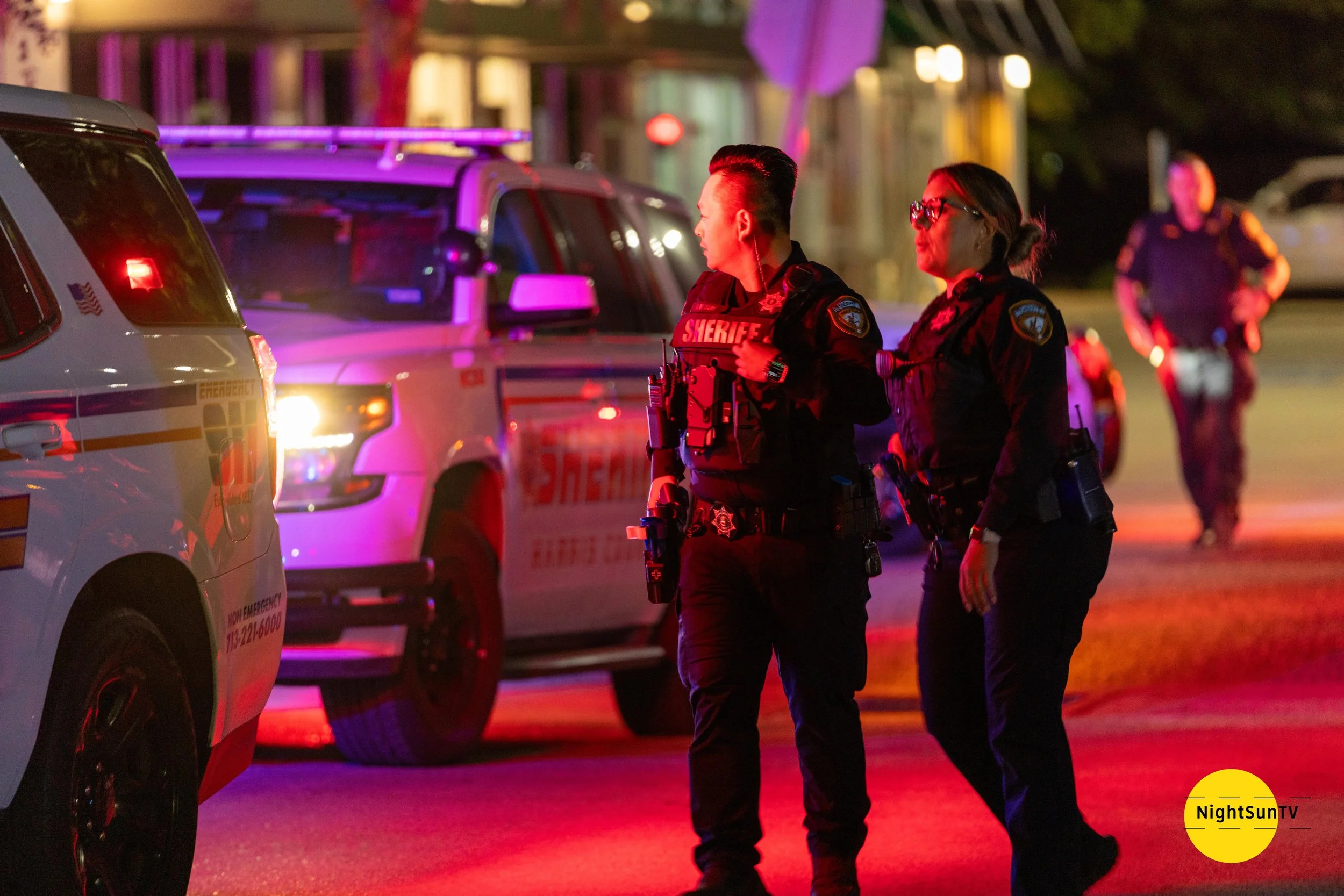Harris County Sheriff’s Office Executes Realistic Active Shooter Drill in Humble
In the early hours this morning, the Harris County Sheriff’s Office (HCSO) conducted a high-fidelity active shooter training exercise at the Woodforest Bank branch located at 6400 FM 1960 E in Humble, Texas. The exercise spanned approximately 5:00 a.m. to 6:30 a.m., placing deputies in a simulated “bank-robbery turned active-shooter” scenario.
An actor plays a dead suspect/victim
According to public notices issued by HCSO ahead of the drill, residents in the area were briefed that a large first-responder presence would be visible and that the exercise could impact traffic or cause confusion if not anticipated.
Training Design: No Script, Realistic Pressure
What set this exercise apart was its intentionally unpredictable nature. Deputies arriving on scene had minimal information: they knew only that they were responding to an activeshooter event. They were not briefed on how many actors (shooters, victims) would be involved, or exactly what actions those actors would take. This “no-script” approach was used to heighten realism and pressure decision-making under uncertainty.
From a nearby staging area—parked in the lot of a local Walmart Supercenter—units responded with lights and sirens, mirroring real-world rapid deployment tactics. Deputies then moved into the bank scenario as though responding to an actual emergency.
The drill’s design is consistent with the types of active-shooter preparedness policies already published by HCSO, which place priority on life-saver actions, clear staging areas, threat containment, and coordinated medical evacuation protocols.
Why It Matters: Building Capability for the Unexpected
HCSO’s training philosophy emphasises that real events rarely come with advance warning or perfect information. By creating a setting in which deputies have to make rapid decisions with incomplete data, the agency is working to sharpen tactical speed, situational awareness, inter-unit communication, and victim-care execution.
In a press notice, officials reminded the public that the training is intended to “save lives” by giving law enforcement hands-on experience dealing with the chaos and stress of active threats. The pre-drill notice also underscored that the presence of lights, sirens, and large emergency-vehicle movement during the early-morning hours is part of the exercise and not a real incident.
Looking Ahead: Infrastructure & Continuous Training
Beyond this specific drill, the county is progressing toward a new dedicated facility for response-to-active-shooter training. The Office of the County Engineer in Harris County notes that a multi-million-dollar project is in pre-design to build a simulation building, classrooms, and other critical infrastructure for training law-enforcement agencies in active attack and rapid-response scenarios.
This investment underlines a broader shift: agencies like HCSO are moving beyond periodic tabletop exercises into full-scale immersive training, reflecting lessons learned from past events and evolving threat environments.
Local Impact & Community Awareness
For residents and local businesses near FM 1960 East and the Woodforest Bank location in Humble, the early-morning timing of the drill (5:00–6:30 a.m.) helps minimise disruption to regular operations, but still offers a realistic window for deputies to simulate responses during low-visibility conditions (pre-dawn).
Local drivers were advised to anticipate increased emergency vehicle traffic in the staging and deployment areas, and to remain calm if they see unfamiliar lights or response activity. Public communications emphasised that this was a training scenario, not an active threat.
Conclusion
Today’s exercise demonstrates HCSO’s commitment to proactive preparedness. By simulating a high-risk bank scenario with no advance script, deputies are placed into conditions that more closely mirror real incidents—where variables are unknown, the threat is active, and lives may hang in the balance. Coupled with investment in dedicated training infrastructure, the department is reinforcing readiness not just for next time, but for the unpredictable.
As the county’s population grows and public venues become more complex, training like this helps ensure that response teams are not only equipped—but conditioned—for rapid, decisive action when seconds matter.































